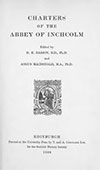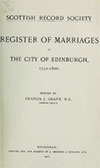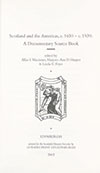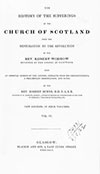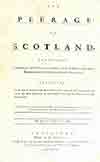

William Roy, 1747 – 1752map image courtesy of NLS
Leuchat was a castle or tower house belonging to the Spittal family between the 16th and 18th centuries but nothing of it now remains.
The first mention of the lands of Leuchat comes around 1220 when Richard, son of Hugh de Camera, granted to Inchcolm Priory an oxgang of land in the territory of Fordell located next to the sea between Dalgety and Leuchat.
Interestingly there is a Leuchat (now known as Leuchold) in Dalmeny parish across the River Forth which may have taken its name from the Fife estate. The two areas were in the possession of Gospatric who was the lord of Inverkeithing and Dalmeny in the 12th century.
In 1428 Sir David Stewart received a charter of the lands of Luchelde (Leuchat) along with the barony of Rosyth from James I but later in the 15th century Leuchat was in the possession of the Spittal family (also spelled as Spittell and Spittall) who were prominent in Fife from the mid-14th century.
What form the castle at Leuchat took and who built it is not known, however it may have been the Spittal family. It occupied a position on rising ground set back from the coast and would have offered commanding views along and across the River Forth and towards Barnbougle Castle on the opposite shore.
Leuchat (written as Lochalde) was the seat of a Willieam Spetell in 1457 however there seems to have been a connection with the church as when John Kers, the Abbot of Inchcolm, retired in 1460 he was permitted to draw a pension from the “lands, farms and annual rents of Donibristle and Bothedlak and the mill and garbal and lesser teinds of the same, together with the garbal teinds of Leuchat”.
A John Spittal of Leuchat witnessed a charter by the bailies of Inverkeithing in 1484 and in 1488 a William Spittal was a bailie of Dunfermline. William was married to Elizabeth Seytoun and bought a one-seventh part of the lands of Fordell from John Seytoun, portioner of Gargunnock in Stirlingshire. I haven’t managed to establish a connection between Elizabeth and John but it may be that they were related.
Around this time the Spittal family seems to have become quite active in the Stirling area and in 1480 Patrick Spittal came into the possession of Blairlogie. This branch of the family would go on to have some influence with James IV.
A William Spetale is recorded in 1523 leasing the mill of Fordell. In 1528 he is recorded as receiving the lands of Balmannoch or Mains of Beith from Thomas Balmannoch, after which they became known as Leuchatsbeath. A document from 1548 “records the excommunication of the Abbey at the instance of William Spittall of Leuchat”. Possibly the same William, or perhaps his son, protested in 1574 at having to build a doocot (James IV having decreed in 1503 that “All lords and lairds to have parks with dovecots etc”).
The Spittal family seem to have been quite wealthy and a household inventory of William, thought to date to around 1580, survives in the Henderson of Fordell papers. William died in 1586 and was succeeded by a James Spittell who was married to Agnes Lundie.
Early in the 17th century, possibly following the death of James Spittell, Alexander Spittal of Blairlogie came into the possession of the lands of Leuchat via a transaction with his relative Margaret Spittal and so united the two estates and branches of the family.
The Gordons’ mid-17th century map of Fife seems to show Leuchat on the coast between Donibristle Castle and St. Bridget’s Kirk. This location is also suggested by Blaeu’s slightly later 1654 map of “The Sherifdome of Fyfe” but Blaeu’s map of “The West Part of Fife”, also published in 1654, shows Leuchat (as Leuchell) slightly inland to the north.

Joan Blaeu, Amsterdam, 1654map image courtesy of NLS
Alexander died in 1654 and a document of 1658 records an agreement made between the owner, presumably Alexander’s son Alexander, and a builder to construct a doocot at Leuchat. The younger Alexander Spittal of Blairlogie and Leuchat was the Member of Parliament for Inverkeithing from 1689 until his death in 1696, and in 1695 Leuchat was erected into a barony for him. He was in turn succeeded by his son, James, who was born in 1664.
James Spittal of Blairlogie and Leuchat went on to become provost of Inverkeithing and the Member of Parliament for the town from 1696 until 1707. He was predeceased by his only son, also James, and so the elder James was succeeded by his grandson, another James, who went on to become a captain in the British Army. The youngest James married Frances Innes in 1741 and their daughter, Elizabeth Spittal of Blairlogie married Robert Dundas of Blair. The Blairlogie estate subsequently passed to the Dundas family.
On Roy’s Military Survey of Scotland published in the mid-18th century Leuchat is shown within landscaped grounds to the north-west of Donibristle, to the east-south-east of Letham and to the west of Dalgety.
Seemingly the eldest James continued to reside at Leuchat until his death in 1760 at the age of 96 but it doesn’t seem to be named on early 19th century maps beyond this. Unnamed buildings marked on subsequent maps in the vicinity of Leuchat’s location suggest it may have been absorbed into the Donibristle estate.
By the time of the mid-19th century Ordnance Survey map the site of Leuchat was seemingly occupied by a “pinery” with walled garden and associated buildings. The walls of the garden are still standing, now surrounding a shopping centre off Regents Way, and Gardens Cottage still stands at the west corner of the garden. The pinery buildings would have been at the end of what is now Carrick Drive. A possible position for Leuchat is to the south-east of the walled garden and that is where I have placed it for now, the site falling within Longhill Park.
Alternative names for Leuchat
House of Leegt; Leuchatt; Leuchell; Leuquhet; Lewchatt; Lewquhat; Lewquhatt; Lochalde; Louchat; Louhild; Louchyldd; Lowchald; Lucaht; Luchart; Luchat; Luchatt; Luchelde; Luchett; Luchquhald; Luchquhet; Luchquhit; Luchteild; Luget; Luquhat; Luquhet; Luquhit; Luquhyt; Lwquhat





